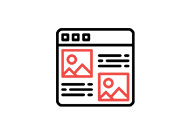Technical SEO can seem like a waste of time if you do not know what you are doing. Understanding the priority of your technical errors is key to making sure you are focusing your efforts on the most important tasks. Many tools prioritize these tasks for you and ours is no different. We have three variations of errors: Critical, warnings, and notices. The most important are the critical errors, then warnings, and finally notices. If you section off your fixes in this manner you will prioritize properly, but let’s look at some best practices for fixes on critical errors related to technical SEO.
Critical Technical Errors
Critical errors are those which are found by crawlers that can have negative impacts on your SEO efforts. These include but are not limited to server errors, no title, duplicate content, broken links, and sitemap problems.
Server Errors
Each page you request as a browser of the internet returns a server code. A “200” server response means the page is live as expected. If you have implemented a 301 redirect, this is a server response directing the request to a new page. The server errors we typically see that are a huge red flag are 404 errors. These indicate a missing page that a search engine or user expected to be there. Whether the URL comes from an outside source or within your website, it is important to make sure users will end up at the page you want them to end up at.
No Title
Your titles are the first descriptor a crawler sees. Some titles need a little TLC with optimization, but sometimes we run across pages missing titles altogether. This is like telling a search engine you do not know what you want to rank for. The more indications you can give a search engine, the more chance you have to rank for your target keyword, but if you are lacking titles altogether, you are shooting yourself in the foot with Google and other search engines.
Duplicate Content Errors
Duplicate content is a huge red flag for search engines. Whether the duplicate content lives on your own site or someone else’s, you run the risk of rankings dropping because of the confusion this causes for search engines. Duplicate content looks like plagiarism in every regard. If the duplicate content is found on two pages within your site, you could canonicalize the URL to direct search engines to the right page. If the duplicate content error is coming up for another URL, someone copied someone else. You should either reach out to the other site to request the content be taken down, ask them to implement a canonical tag, or remove the content from your site.
Broken Links
Broken links are like dead-end roads. If you were driving home the same way you drive home every day and came to an unexpected dead end you probably would not be very happy. If Google maps led you to a dead-end, you would probably switch over to waze for your next trip. The only control you have over links are fixing the ones that live on your site and routing the traffic from links from other sites to the correct page.
Sitemap Errors
Your sitemap sets search engines up for expectations when they get to your site. First, you should make sure you have a sitemap and it is working properly. Then you should check the pages that are included and excluded from the potential path. Search Engine Journal has worked up a great blog on optimizing your sitemaps.
As you can see, there is quite a bit to unpack here and much of it is technical. If you are able to understand the errors you are getting from crawl audits, you can implement the most important fixes first. We will be sure to break down warnings and notices in future blogs.
“This post was selected as one of the top digital marketing articles of the week by UpCity, a B2B ratings and review company for digital marketing agencies and other marketing service providers.”



